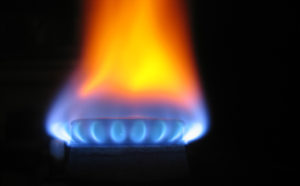 Natural gas futures erased previous daily gains and retreated toward negative territory following a bearish EIA weekly report, which showed U.S. stockpiles rose more than the five-year average.
Natural gas futures erased previous daily gains and retreated toward negative territory following a bearish EIA weekly report, which showed U.S. stockpiles rose more than the five-year average.
On the New York Mercantile Exchange, natural gas for October delivery plunged to $3.521 per million British thermal units at 14:51 GMT, down 1.72% on the day. Futures fell to a session low of $3.519 per mBtu minutes after the data was released, while days high stood at $3.648 per mBtu, the highest since July 26. The fuel slipped 0.2% on Wednesday and trimmed its weekly advance to little over 1.1%.
According to the Energy Information Administration, U.S. natural gas storage rose by 67 billion cubic feet in the week ended August 23, 1 million above the five-year average build of 66 billion cubic feet, and surpassing last years 64 billion gain during the comparable week. According to a Bloomberg survey of 25 analysts, inventories were expected to rise by 62 billion cubic feet.
Total gas held in underground storage hubs equaled 3 130 billion cubic feet as of last week, 7% below last years 3 365 billion. Reserves however remained 1.5% above the five-year average stockpiles at 3 085 billion cubic feet.
The report also showed that stocks in the East Region rose by 49 billion cubic feet and were 107 billion below the five-year average. Inventories in the Producing Region received a net injection of 16 billion cubic feet to 978 billion, 95 billion above the five-year average.
The fuel was supported earlier in the day as weather forecasts shifted and predicted warmer-than-normal weather in most of the U.S. According to Commodity Weather Group LLC in Bethesda, Maryland, temperatures across most of the United States will be above the average through September 1, followed by cooler weather through September 11. According to AccuWeather Inc., temperatures in New York will peak at 86 degrees Fahrenheit on August 31, 6 above average, while the high in Chicago will touch 89 degrees, 9 more than usual.
When higher-than-normal temperatures are expected, natural gas surges as increased electricity demand to power air-conditioning calls for more supply of the fuel, which is used for a quarter of the U.S. electricity generation. Mild temperatures have the opposite effect. According to the Energy Information Administration, power generation accounts for 32% of U.S. gas demand.





